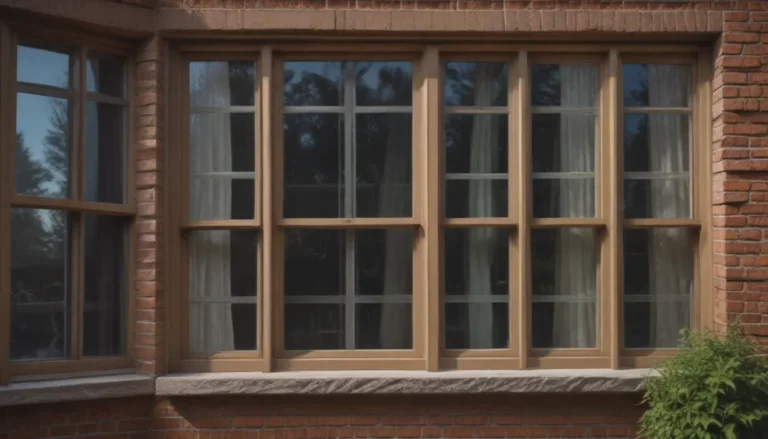Everything You Need to Know About Floor Joists: A Detailed Guide

Are you considering adding a deck or an addition to your home? Understanding the basics of floor joists and joist spans is crucial, especially if you want to obtain a building permit. These structural components play a vital role in supporting the flooring material and ensuring the stability of your home. Let’s delve into the world of floor joists, joist spans, and how they impact your home’s structure and your remodeling projects.
What Is a Floor Joist?
Let’s start with the basics. Floor joists are horizontal wood boards or steel slats that are evenly spaced apart to provide support for the flooring material. These joists run perpendicular to the beams, creating a sturdy foundation for your home. Understanding the components of a floor frame can help you appreciate the role of floor joists in your home’s structure.
Parts of a Floor Frame
- Floor joist: Horizontal boards that support the flooring material
- Header joist: A beam that runs perpendicular to the floor joists to provide additional support
- Blocking: Horizontal pieces of wood that reinforce the floor joists and prevent twisting
- Beam: A horizontal structural element that supports the floor joists
- Sill plate: A horizontal wooden member that sits on top of the foundation walls and supports the floor joists
- Subfloor: The layer of material that sits atop the floor joists and provides a surface for your finished flooring material
Understanding Floor Joist Span
The floor joist span is the distance that a joist can span from one end to the opposite end without additional support. Several factors influence the joist span, including the distance covered, the width and thickness of the joist, the type of material, and the spacing between joists. Larger floor joists can carry heavier loads, while closer spacing between joists increases the load-bearing capacity of the floor.
Selecting the right floor joist size and spacing is essential for ensuring structural integrity and maximizing space. Builders must consider load capacities and choose appropriate joists based on factors such as floor load and structural requirements.
Floor Joist Load
The weight placed on the floor, known as the floor load, determines the joist span requirements. Floor loads are classified into two categories:
- Dead load: The weight of the permanent structural elements and building materials
- Live load: The total weight of occupants, furnishings, and other temporary loads
For residential construction, the dead load is typically around 10 pounds per square foot, while the live load can range from 30 to 40 pounds per square foot. The live load requirements vary based on the location within the home, with first-floor areas typically having higher live load requirements than second-floor areas.
Types of Floor Joists
There are three main types of floor joists, each with its own advantages and considerations:
- Solid lumber floor joists: Traditional, solid wood joists that offer strength and durability
- I-Joists: Engineered joists that provide enhanced strength and structural stability
- Open-Web Floor Trusses: Lightweight trusses with an open design that allows for easy installation and wiring
Each type of joist has unique characteristics in terms of cost, lifespan, and installation complexity. By understanding the differences between these options, you can make an informed decision based on your project requirements and budget.
Utilizing Joist Span Tables
Joist span tables provide guidelines for determining the appropriate joist spans based on lumber species, size, and spacing. These tables are essential for builders and contractors to ensure the structural integrity of the floor system. Local building codes should always be consulted, as they may specify specific requirements based on the construction site’s location and conditions.
It’s important to note that accurate joist span calculations should be performed by a structural engineer or licensed contractor. Using pre-calculated tables can help guide decision-making and ensure compliance with building regulations.
Sample Joist Span Table
Here is a sample table showcasing minimum floor joist sizes for joists spaced at 16 inches and 24 inches on-center for 2-grade lumber with typical dead and live loads in residential construction:
| Joist Spacing | Lumber Size | Dead Load (psf) | Live Load (psf) |
|—————|————-|—————–|—————–|
| 16″ o.c. | 2×8 | 10 | 40 |
| 24″ o.c. | 2×10 | 10 | 40 |
Builders and contractors can adjust their choice of lumber size and spacing based on project requirements, such as headroom constraints or longer spans.
When Do Joist Spans Matter Most?
While knowing about joist spans may not be essential for everyday tasks, there are instances where it can make a difference:
Wood Species and Strength
Different wood species have varying strength characteristics, with slow-growing species typically offering higher bending strength. Selecting the right wood species for your floor joists can impact the structural stability and load-bearing capacity of your floor system.
Lumber Grade and Quality
The grade of lumber used for floor joists can significantly affect their strength and durability. Higher-grade lumber with fewer defects is preferable for structural applications, as it provides greater stability and resilience over time.
Joist Size and Dimension
The size and width of a joist board play a crucial role in its load-bearing capacity. Choosing the appropriate joist size based on the project’s requirements and load calculations is essential for ensuring a safe and structurally sound floor system.
Cost Considerations
Replacing damaged or deteriorating floor joists can be a costly endeavor, with prices varying based on the complexity of the project. Properly installed floor joists can last for decades, providing long-term stability and support for your home.
Conclusion
In conclusion, floor joists are vital components of your home’s structure, providing the foundation for your flooring materials and supporting the weight of occupants and furnishings. Understanding the role of floor joists, joist spans, and load-bearing requirements is essential for ensuring the structural integrity and safety of your home.
Whether you’re planning a home renovation or constructing a new building, having a solid grasp of floor joist fundamentals can help you make informed decisions and ensure a sturdy, durable floor system. By considering factors such as wood species, lumber grade, joist size, and construction techniques, you can create a floor system that meets your needs and enhances the value of your property.
Remember, when it comes to floor joists, quality and attention to detail are key. Invest in the right materials and consult with professionals to ensure the success of your project. Your home’s structural integrity depends on it!





